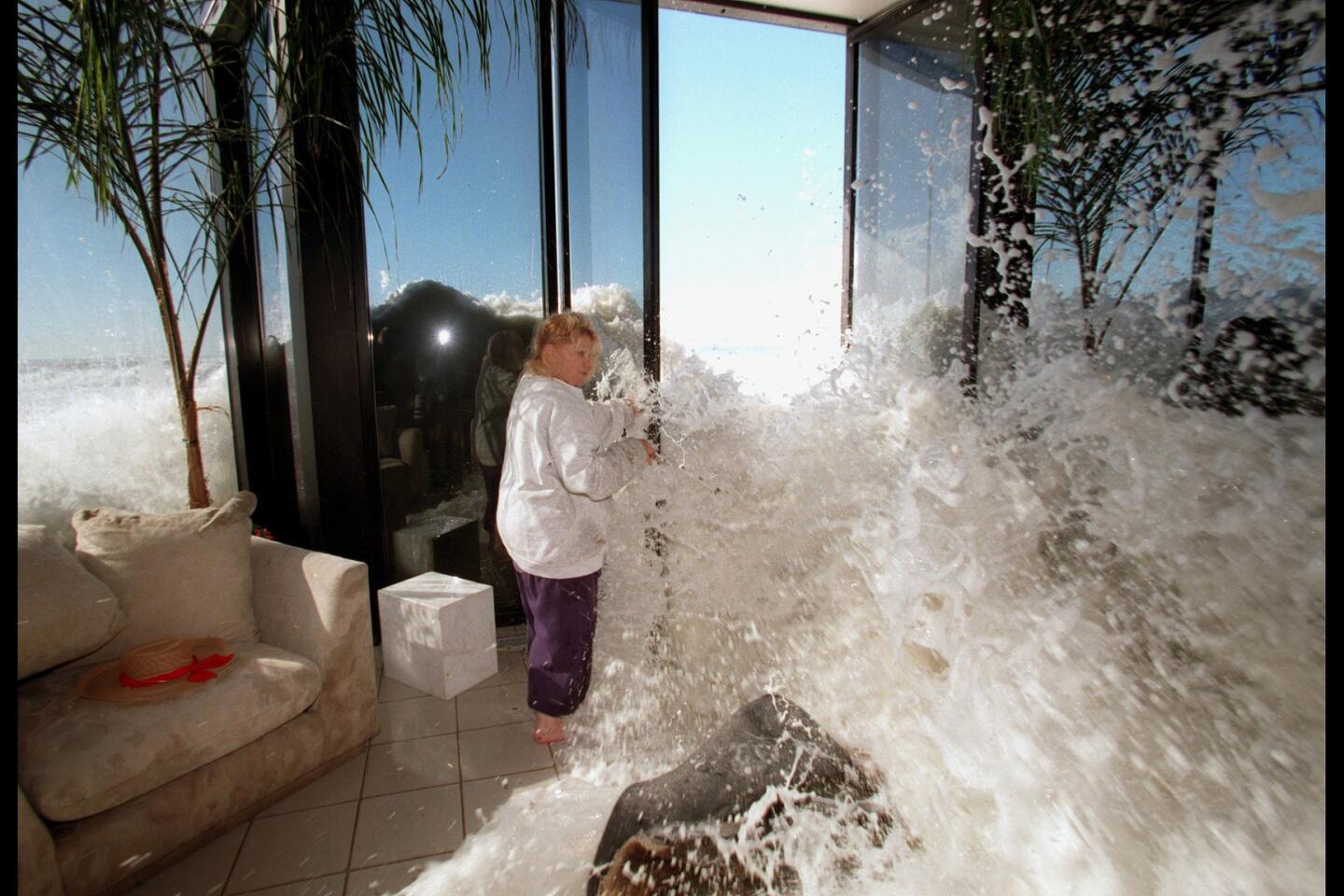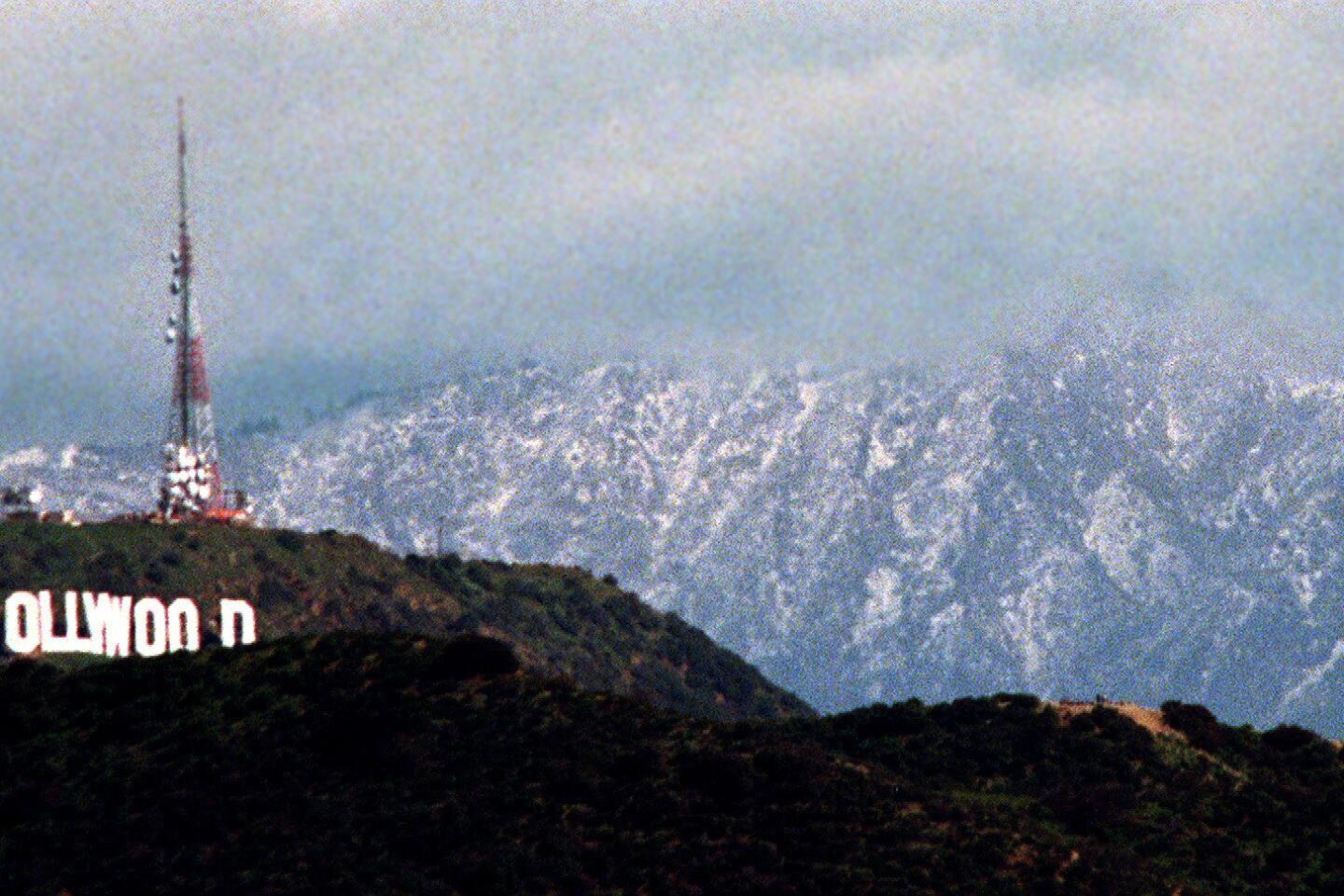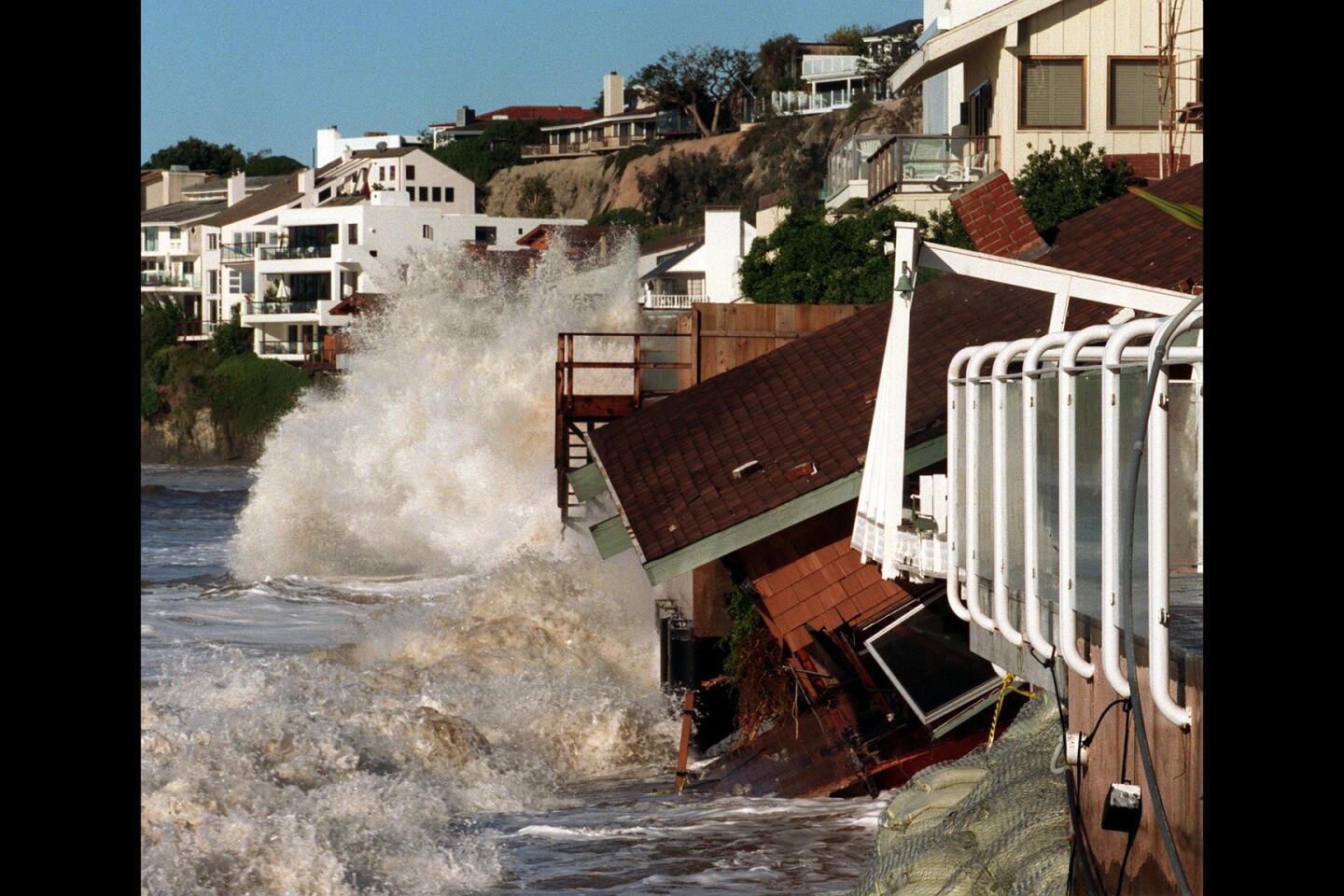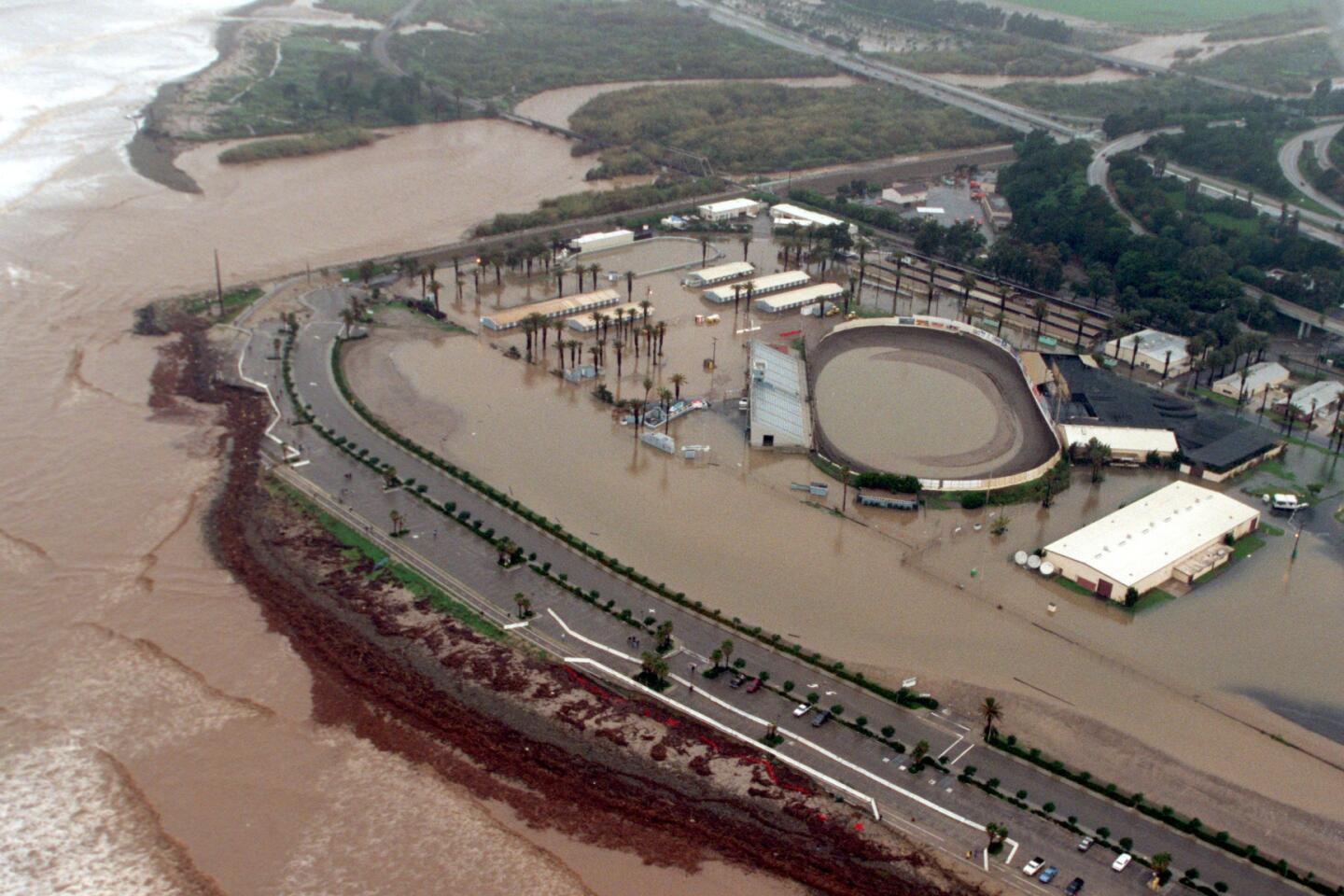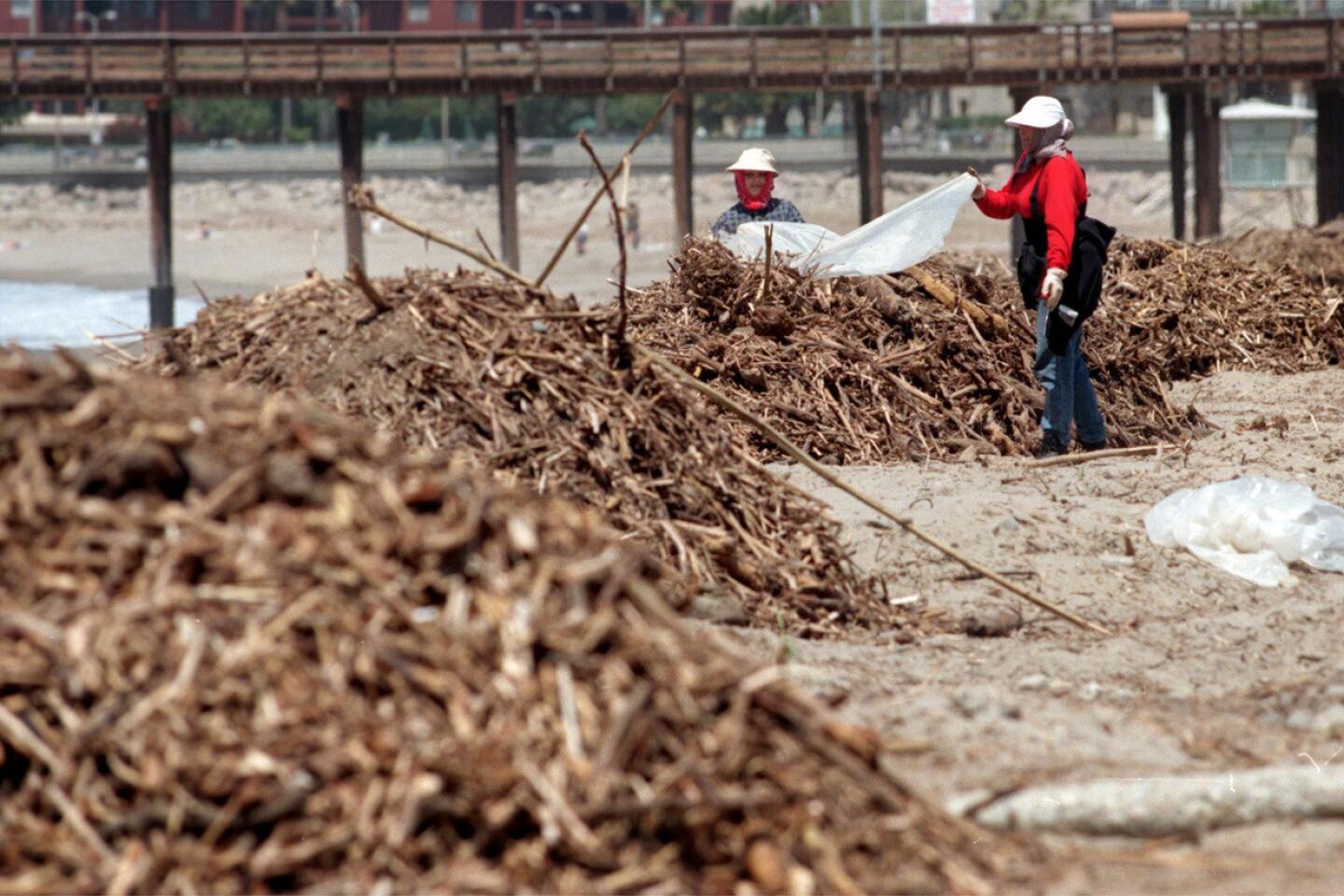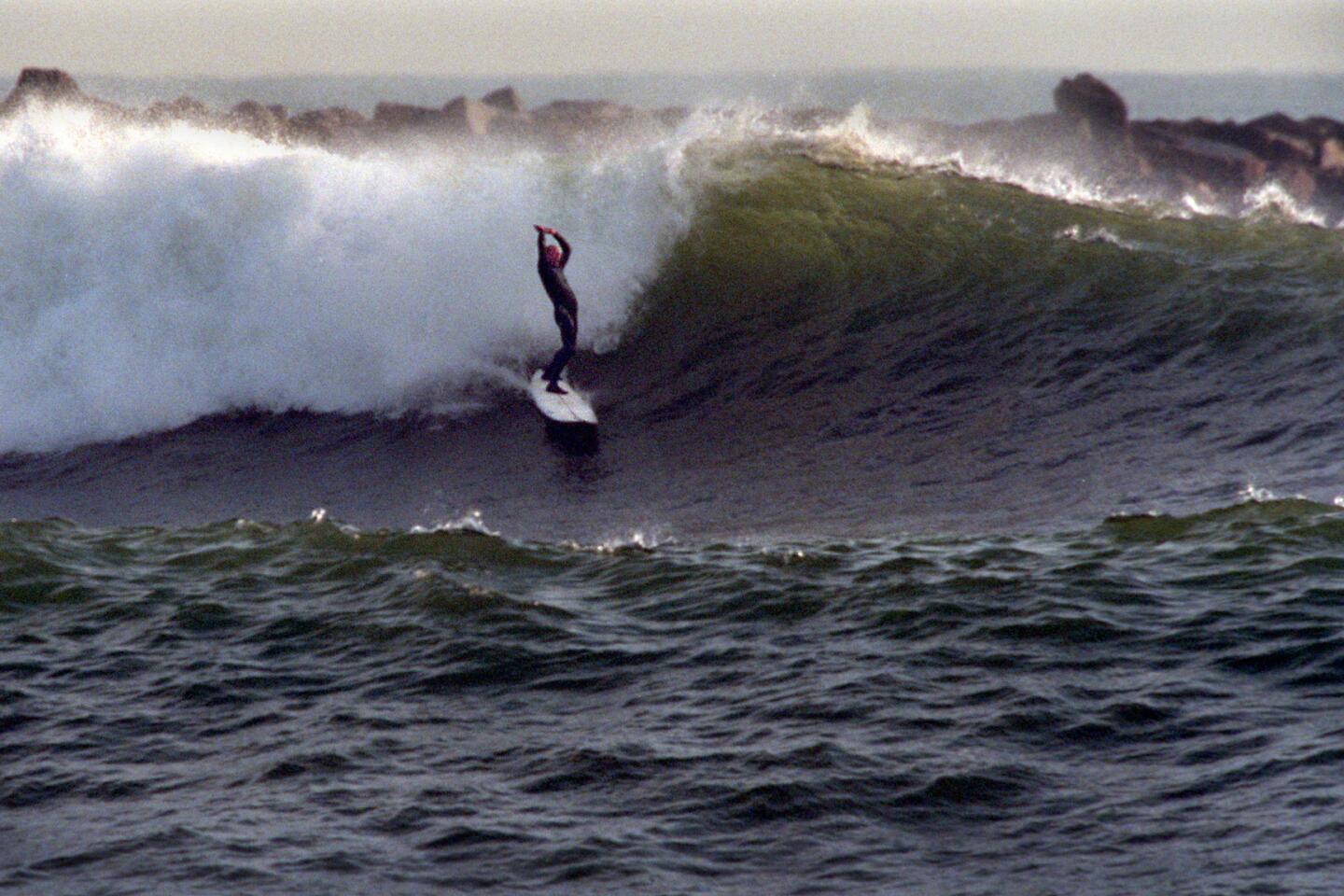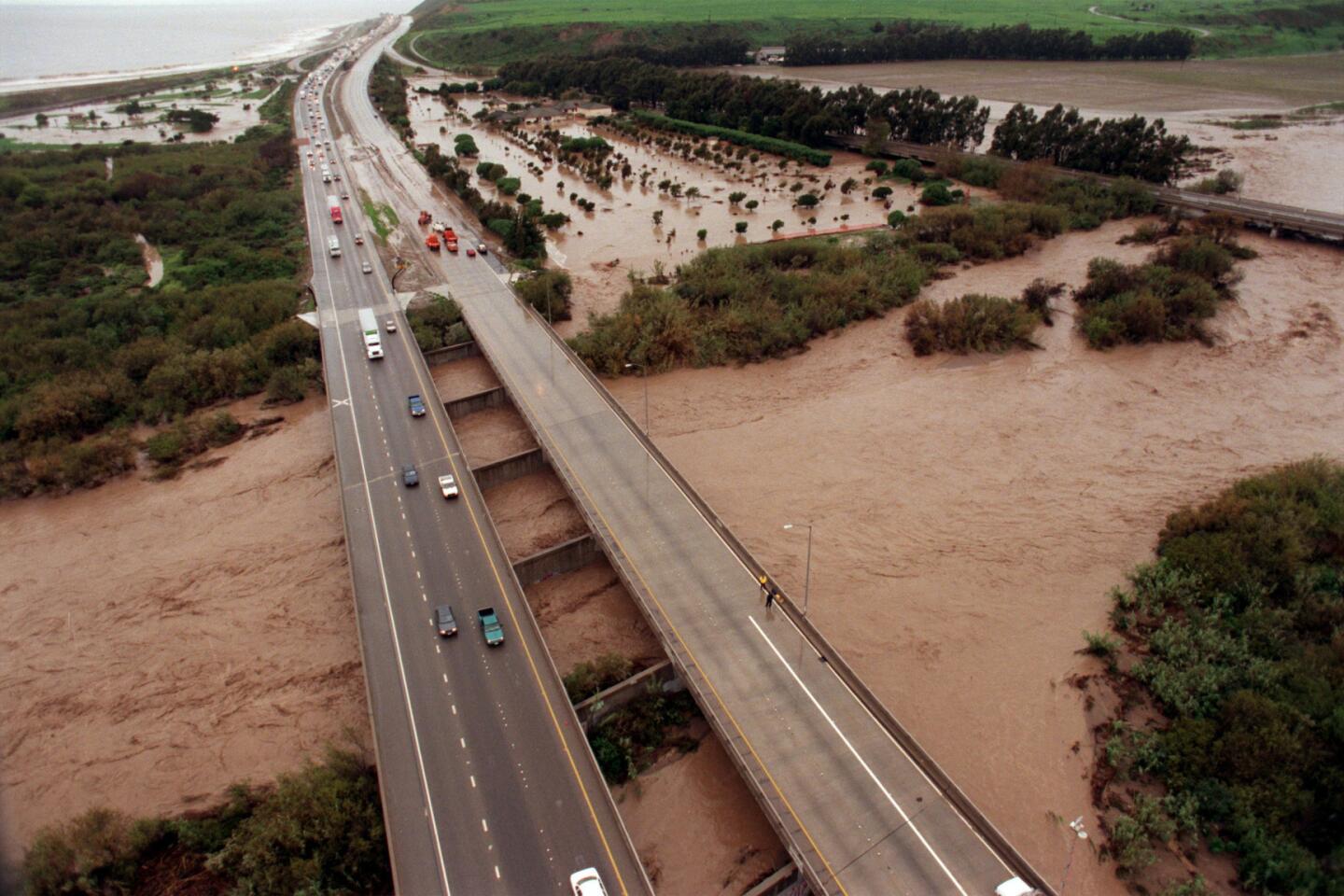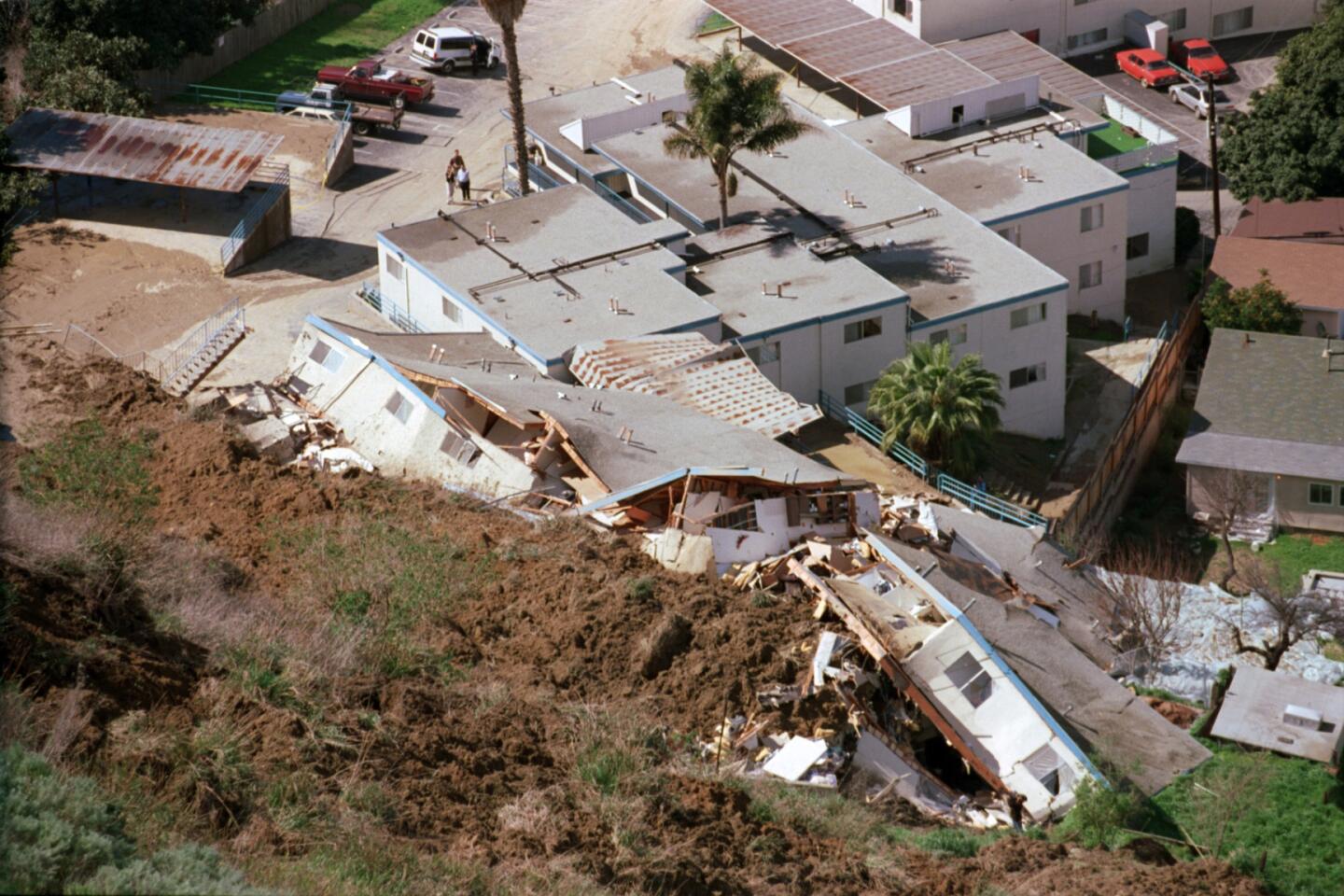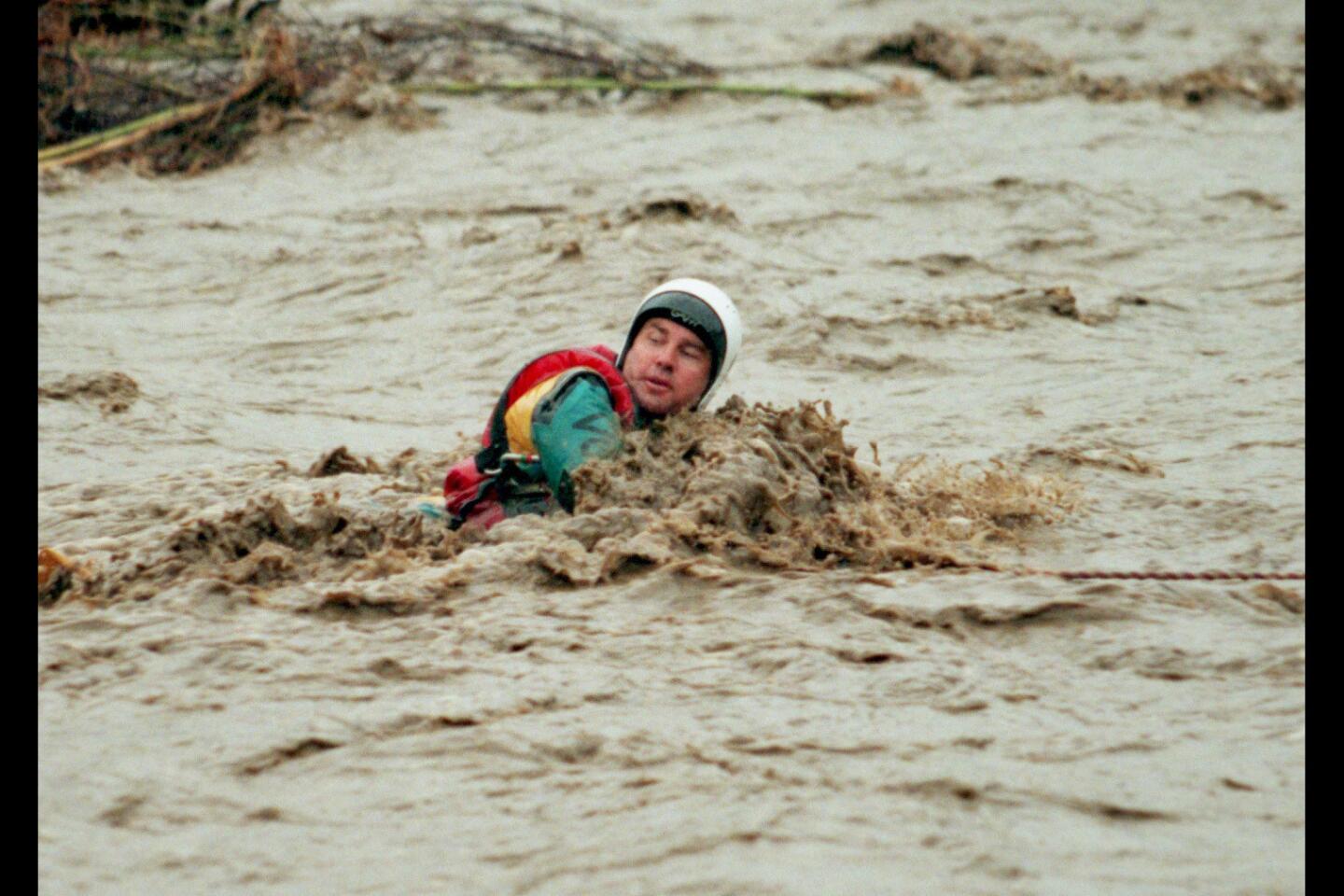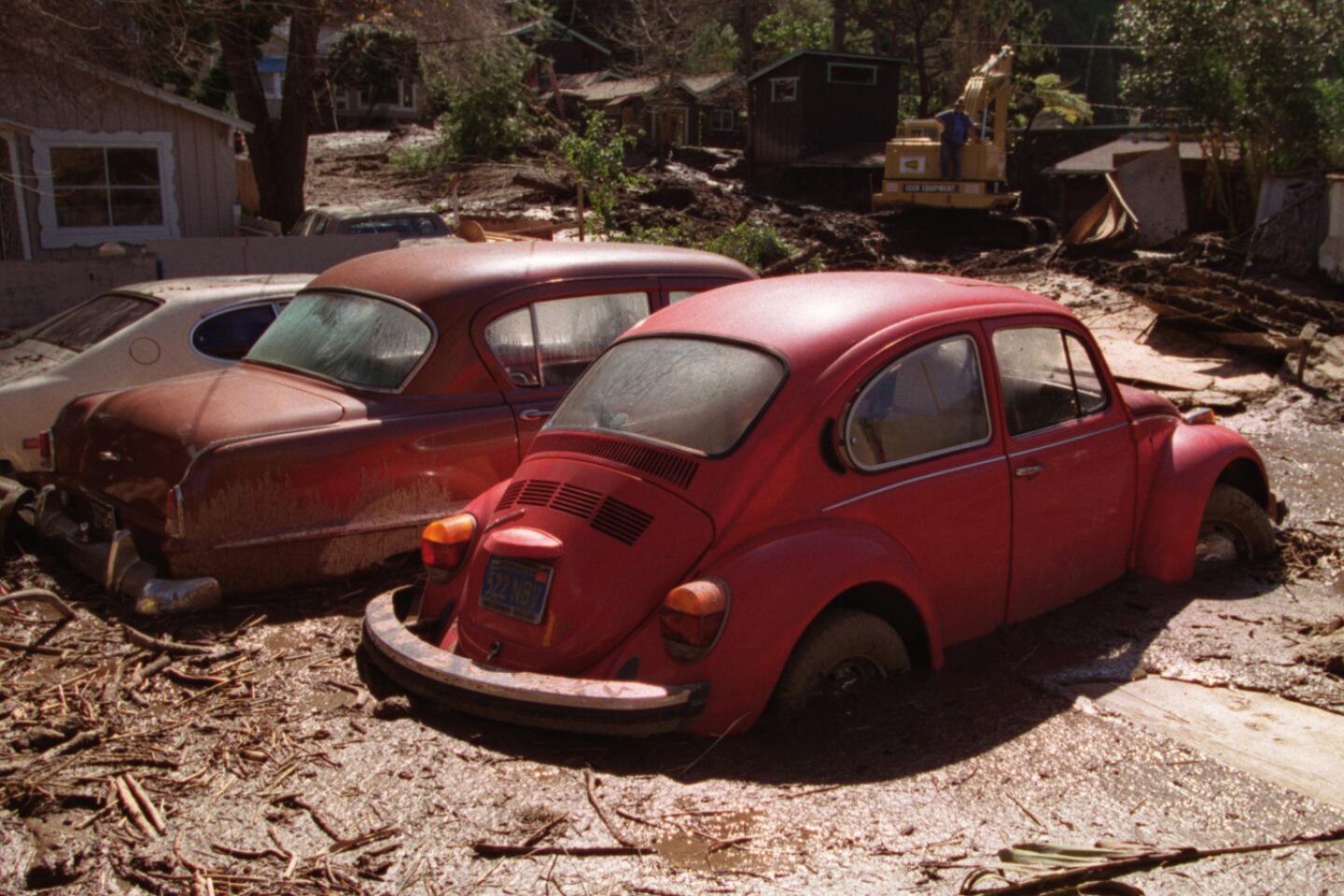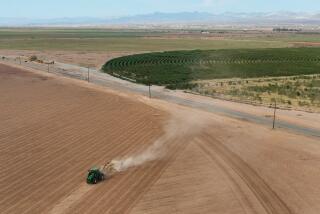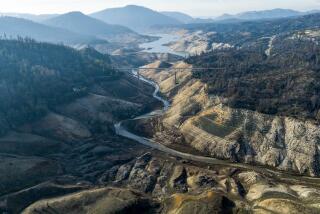El Niño rains forecast to reach far into Northern California, where they’re most needed
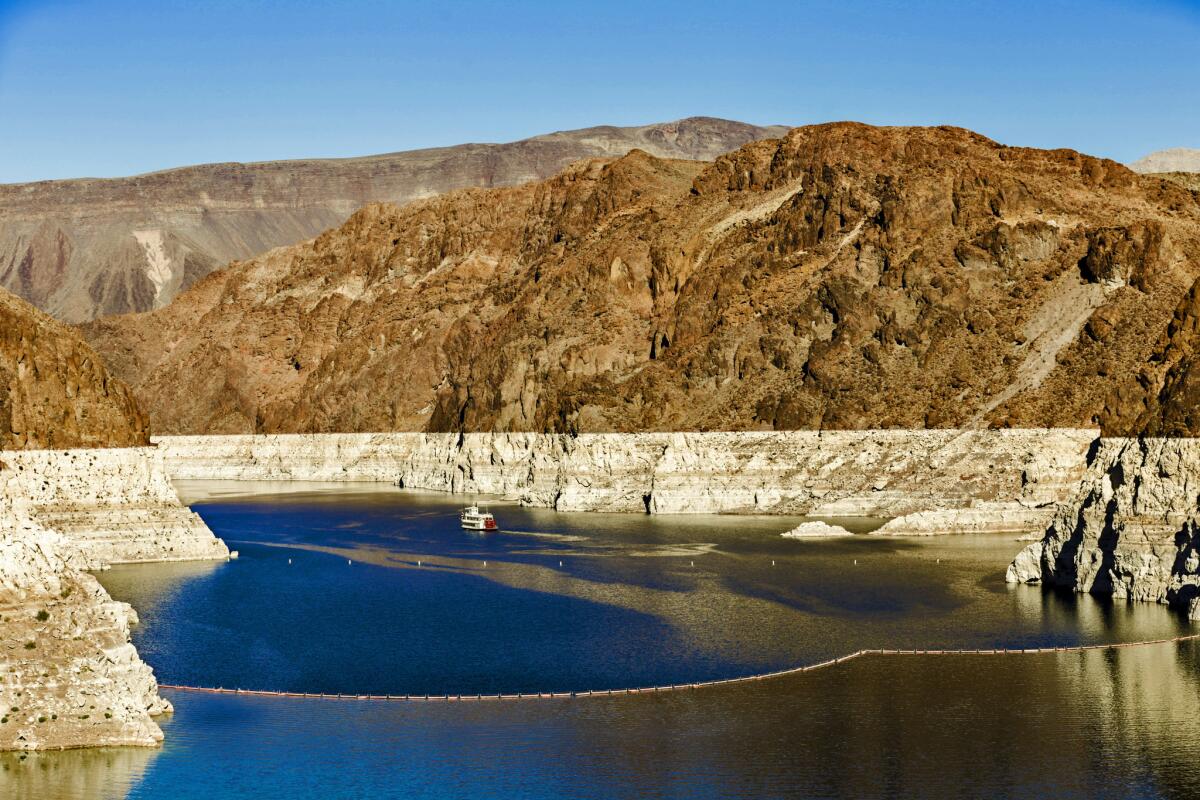
The water level in Lake Mead has hit its lowest levels since Hoover Dam was completed in the 1930s.
- Share via
Reporting from Diamond Valley Lake, Calif. — Few places would benefit more from a winter of El Niño-driven rainstorms than this massive, rapidly depleting reservoir in the desert 90 miles southeast of Los Angeles.
On Thursday, a new federal forecast said El Niño is continuing to strengthen, with experts saying it’s on track to produce potentially record rainfall.
The new forecast is particularly significant because it shows the increased rain reaching far into Northern California to the mountain ranges and system of reservoirs that provide the state with huge amounts of its water. Earlier forecasts showed El Niño providing rain mainly to Southern California.
If El Niño acts as it has before, “there will be a number of significant storms that will bring heavy rains. What that brings will be floods and mudslides,” said Mike Halpert, deputy director of the National Weather Service’s Climate Prediction Center. “We’re more confident we’re going to be seeing El Niño through this winter.”
This prompted officials, who had generally been reluctant to predict El Niño’s effect on the drought, to say they expect the rains will ease the drought conditions but won’t end them.
“If the wettest year were to occur, we still wouldn’t erase the deficit that’s built up in the last four years,” said hydrologist Alan Haynes for the National Oceanic and Atmospheric Administration.
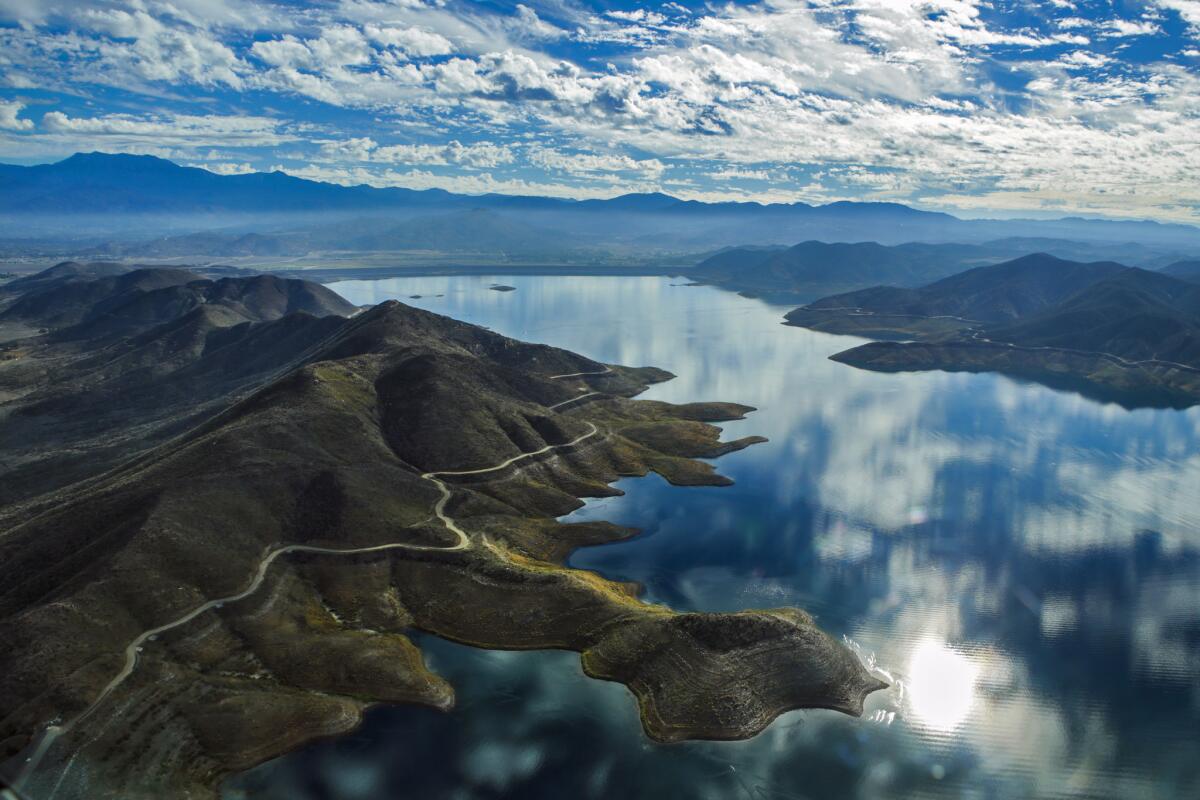
The water levels in Diamond Valley Lake, Southern California’s largest reservoir, are now at the lowest level they’ve been since the lake was filled between 1999 and 2006. A ‘bathtub ring’ showing the maximum extent of the lake can be seen just under the perimeter roadway.
Los Angeles and San Diego have a 60% likelihood of a wet winter, according to the latest forecast. In Silicon Valley, there is more than a 50% likelihood of a wet winter. In far Northern California, the forecast calls for a slightly higher chance of a wet winter over a dry winter. The forecast for a wet winter now covers the mountains that feed California’s most important reservoirs, Shasta Lake and Lake Oroville.
But the state’s water fortunes — both north and south — have long been inextricably linked, as Diamond Valley Lake shows.
Diamond Valley Lake is Southern California’s largest reservoir — built two decades ago to provide the region with more reliable water storage and bolster its emergency supplies. It draws much of its supply from the far reaches of Northern California.
In the last several years, the lake has been rapidly shrinking, falling to levels so low that the boat launch ramp doesn’t even reach the water’s edge. Officials fear prolonged drought conditions could eventually plunge the lake to emergency reserve levels — the amount needed to protect Southern California’s water supply after an earthquake or other natural disaster.
But a single year of heavy El Niño rains is unlikely to fill up Diamond Valley Lake to full capacity, said Bob Muir, spokesman for the Metropolitan Water District of Southern California, which built the reservoir. So many wells and reservoirs farther north are so dry, it’s hard to say how much Southern California would get.
“The big reservoirs — Oroville, Shasta and the many hundreds of small reservoirs up and down the state, as well as the groundwater basins — it just takes a long time to fill all that stuff up. It’s never happened in one winter,” said Bill Patzert, climatologist for NASA’s Jet Propulsion Laboratory in La Cañada Flintridge.
On a conference call with reporters Thursday, scientists said the amount of precipitation California’s Sierra Nevada has lost in the four-year drought has been 2.5 to 3 times the average annual precipitation.
California’s wettest year on record was 1982-83, when El Niño-fueled storms battered the state. But the Sierra Nevada —where snow provides a major source of water — didn’t quite get double its annual average precipitation that year.
The situation is also bad in the reservoirs along the Colorado River, which provides drinking water to Southern California.
Water levels at those reservoirs are at historic lows. They last filled up during the 1997-98 El Niño storm season, but that was after a decade of wet winters.
Since then, water stored in the giant reservoirs held back by Hoover Dam and Glen Canyon Dam has been slowly disappearing over the last 16 years, from 95% capacity in 1999 to about 45% in 2015.
Water levels in Lake Mead, which is held back by Hoover Dam, are now at their lowest since the dam was filled in the 1930s and could fall below a critical level in the next few years.
“When will Lake Mead fill up again? Probably not in our lifetimes,” said Bill Hasencamp, the MWD’s point person for the Colorado River. “If you saw it full, save those pictures.”
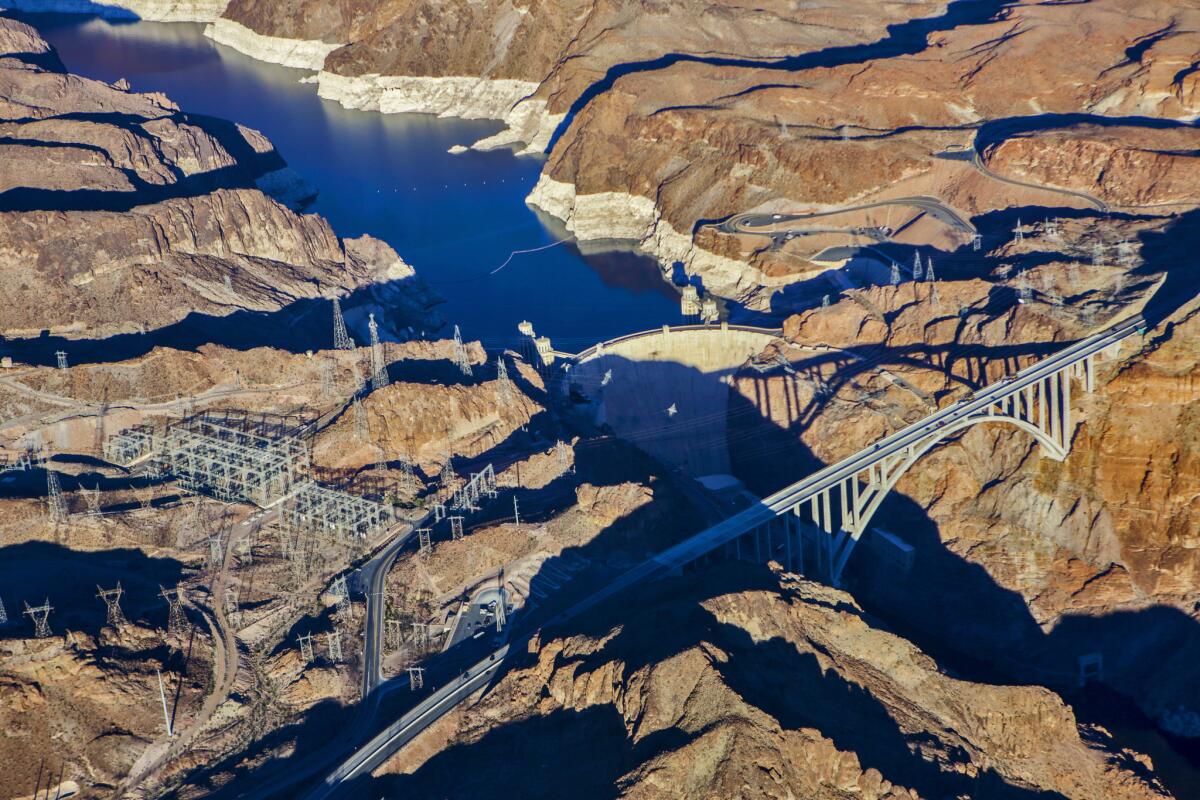
Lake Mead, formed by Hoover Dam, is one of Southern California’s most important sources of water, yet has been draining steadily since 1999. Not only has a drought persisted in the American West, but demand for Colorado River water has increased in Arizona and Nevada, and some officials expect Lake Mead to never fill up again in our lifetime.
Persistent drought in the Colorado River area has continued since 2000 — the driest 16-year period in more than a century of historical records.
Climate change is expected to make matters worse, with hotter weather drying out the land, reducing the amount of water that gets into the river. Also, beginning in the 2000s, Nevada and Arizona started to take more of their allocated supply of water.
El Niño is a weather phenomenon that involves warming sea-surface temperatures and a change in wind that alters weather patterns in the atmosphere worldwide.
Even if El Niño turns out to bring heavy rains to California this winter, it could prove disappointing.
Ideally, precipitation would fall in Northern California’s mountains as mostly snow, so it can be kept frozen for many months and refill reservoirs at a slow, gentle pace as it melts in the spring and summer.
But in recent years, abnormally hot winters have brought precipitation that has come down there as mostly rain — a big problem because too much rain all at once, even in a drought, will force dam officials to flush out excess water to ensure dams don’t overflow and have enough capacity to keep incoming floodwaters from destroying cities downstream. Scientists say they don’t know if the northern mountains will see more snow or more rain.
The other big problem is the intensity of this four-year drought. It will almost certainly take years to catch up and will require years of consistent above-average rains to get there.
See the most-read stories this hour >>
It has happened before. Most of the 1980s and 1990s were very wet years for California, except for a brief, intense drought between 1987 and 1992. The 1980s ended a multi-decade dry period between the 1940s and 1970s, Patzert said.
But the arrival of a big El Niño doesn’t mean the start to years of plenty. In fact, the end of the 1997-98 El Niño brought El Niño’s sister, La Niña, “the demon of drought,” Patzert said. So it’s entirely possible that this El Niño could be a one-year reprieve and more years of drought could follow.
That would be devastating for Diamond Valley Lake, which is now at its lowest level since it started filling up with water.
Created by combining two desert valleys, it is capable of holding more water than Lake Havasu and was intended to be a recreational resource for Riverside County.
But on one morning this week, it was desolate. The boat storage yard was mostly empty. And a small crew worked quietly to extend the boat ramp even farther into the shrinking lake.
Lin and Stevens reported from Diamond Valley Lake and Rañoa from Los Angeles.
Follow us for the latest news in El Niño and the drought: @ronlin and @bymattstevens. For graphics that help us understand California, follow @ranoa.
ALSO:
28 things to do to prepare for El Niño rains this season
L.A. County ramps up El Niño preparations
El Niño keeps getting stronger, raises chance of drenching rains
More to Read
Sign up for Essential California
The most important California stories and recommendations in your inbox every morning.
You may occasionally receive promotional content from the Los Angeles Times.
